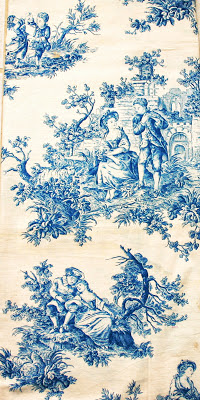Sunbonnet Sue- The Darling of Appliqué Quilts
For centuries needleworkers have embellished cloth by adding
layers of fabric in pictorial designs
of religious and folk art themes. In
renaissance Europe this technique was considered a form of embroidery, known as
“intasia” embroidery from the Italian for “inlay”.
In American quilt making tradition, initial appliqué was
termed Broderie Perse (Persian Embroidery) in which elements were cut from
printed chintz fabrics and sewn onto a plain ground. At times, borders were
decorated with designs cut from scraps of plain or small-print cloth. This would become the definition of American
appliqué where entire designs were created from small pieces of overlaid fabric
or “patchwork”. Applique embellishments were popular for garments and household
linens.
As with all trends, rises in popular techniques are often
followed by declines and by the end of the 19thC “piecework” in which fabric
“pieces” were sewn together to form units became popular. These units were then joined to form the
quilt or garment. This was further
augmented by the increasing popularity of purchased commercial patterns and
quilt kits with pre-cut shapes ready for stitching.
By the 1920’s appliqué was back, due in part to the
production of colorful small-print Amercian-made fabrics. At this time, also, arose children’s décor
with quilts, linens and china created just for the small ones in the
family. Prior to this, many of these
items were simply smaller versions of full-sized adult products.
Now we come to Sunbonnet Sue. There were early versions of this design, these versions were
actually outlined embroidery. In 1910 Sunbonnet
Sue first appeared as a pattern for an appliqué child quilt. The design for
this bonneted little girl came from the postcards and books by British
illustrator Kate Greenaway in the late 1800’s.
In America, Bertha Corbett published The Sunbonnet Babies Primer in 1902
from which many, many first graders learned to read.
Post cards reproduced from original Sunbonnet Pictures. Merrimack Publishing Corp., N.Y.
There have been hundreds variations of this design,
including a small boy companion called Sam.
Embroidered Sunbonnet Sue quilt blocks
Sue's friend Sam















